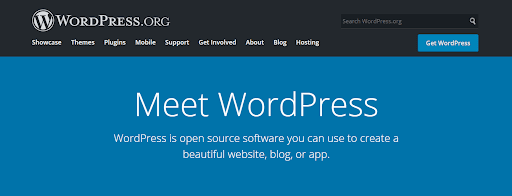How to Create Your First Blog With WordPress (In 4 Steps)

Starting a new blog is exciting. If you’ve never had one before, however, getting it off the ground can feel intimidating. In addition to creating content, there are logistical aspects to consider, such as how to set up a website and how to build your audience.
Nevertheless, starting a blog can be a very rewarding process. Whether you’re looking for a new hobby or you want to make blogging your career, getting past the initial hurdles to putting your content online should feel worthwhile once you start seeing results. Plus, it’s easier to get started than you might expect.
In this article, we’ll discuss some of the benefits of having a blog, both for hobbyists and aspiring career bloggers. Then we’ll share four essential steps to starting a new blog with WordPress. Let’s dive in!
The Benefits of Starting Your Own Blog
People start blogging for a variety of reasons. Some are looking for a hobby, while others want to engage with their passions in a new way. Whatever your reasons for starting a blog might be, there are numerous benefits awaiting you once you get started. A blog can be an excellent way to express yourself creatively, for example, and even to generate income.
For individual bloggers, creating content can drive revenue through ads or influencer deals. A professional blog is also a smart way to share your knowledge and establish yourself as an authority in your field. Plus, many people find the experience of writing and sharing posts fulfilling on its own.
What’s more, businesses often run blogs on their websites. For a company, a blog provides a humanizing element to your brand, and can help generate leads. After all, offering visitors quality content for free encourages them to return to your site and engage with your brand more fully.
Why It’s Smart to Use Self-Hosted WordPress for Your Blog
If you’re new to WordPress, it’s important to understand the difference between self-hosted WordPress and WordPress.com. You can use the latter to create a blog for free, but you’ll have access to limited features, you’ll need to use a subdomain, and WordPress.com will display ads on your website.
On the other hand, self-hosted WordPress gives you complete control over your site:

Unlike a site built with WordPress.com, you’ll have to find and pay for a hosting plan. However, the additional flexibility and ease of monetization you’ll receive is almost always worth the effort and cost.
Additionally, a self-hosted blog appears more authoritative and professional to your audience. Even small details like having your own domain name can make a difference to potential readers. Appearing trustworthy and knowledgeable to visitors is key to turning them into returning readers.
How to Create Your First Blog With WordPress (In 4 Steps)
Getting your first blog started with WordPress is more straightforward than you might imagine. The following four steps will help build your blog from the ground up.
Step 1: Brainstorm to Find Your Blog’s Niche
Having a clear niche sets your blog up for success, especially if you’re hoping to monetize it. Focusing on one topic and building expertise in that area helps to establish your blog as an authority on the subject. If people know what your blog’s about, they’ll be more likely to turn to you for reliable information.
If you can’t immediately identify the right niche for your blog, try writing down a list of ideas for blog posts you’d like to create. Then examine them for commonalities or themes. It’s possible that your niche is hiding in plain sight, and the content you want to create is more focused than you think.
Another key element to nail down right at the start is your blog’s name. What you call your site plays a significant role in how it’s perceived. If you’re feeling stuck for ideas, trying incorporating your niche into the name, and focus on words that are easy to spell, say, and recall.
Step 2: Set Up a WordPress Site for Your Blog
Your blog needs a website to ‘live’ on, which means you’ll have to go about setting up a new WordPress site. You’ll need a registered domain name and a hosting provider in order to accomplish that.
Your site’s domain name (myblog.com) is essentially its address. It helps other people find your site via their web browsers. After you decide on a domain name, you’ll need to register it, which you can do through a variety of domain registrars such as Whois or Namecheap.
As for hosting, you have plenty of options to choose from. Here at WP Engine, for example, we offer managed WordPress hosting plans. These plans are designed specifically for WordPress sites, so you can count on your blog being in good hands. Plus, we’ll help make setting up your WordPress site fast and easy.
As a WP Engine customer, you can install WordPress with just a few clicks. Once you’ve done that, you can move on the fun part – choosing a theme, setting up your home and blog pages, installing plugins, and customizing your site until it’s ready for readers.
Step 3: Craft Quality Content to Attract Readers
The most important part of your blog is, of course, its content. Posts are essentially the products you offer to your readers, and like dissatisfied customers, they won’t return if they don’t have a good experience. Building a loyal readership is vital, so you want your content to be top quality.
Long-form posts are a blog’s bread and butter, as they provide relevant and valuable information to readers. It’s also important to include images and other media to break up the text, and to optimize your posts with on-page Search Engine Optimization (SEO) and through internal and external linking.
A consistent posting schedule also helps to build readers’ trust and keep your blog up-to-date, so you’ll want to consider creating one to stay on track. That way, readers will know when to expect new content from you, and you’ll be able to create better, more strategic posts.
Step 4: Promote Your Content to Help Readers Find Your Blog
Without readers, your blog is just a shout out into the void. An audience is what makes blogging worthwhile, and what provides you with the opportunity to generate income from ads and influencer deals. To attract that audience, promoting your content on social media is a perfect way to start increasing your visibility.
You can do a little research to find out which social platforms most appeal to your target audience, and start by focusing on those. Adding social sharing buttons to your posts enables readers to share your content as well, which is an easy way to spread the word about your site.
Creating a New Digital Experience
Taking the leap to start your first blog is no small task. The benefits you can reap from blogging, however, are well worth the effort it takes to get your site up and running. Choosing WordPress as your blogging platform will provide you with flexibility and authority in the blogging industry, along with the support of a well-established community.
Of course, you can also have the support of our team at WP Engine backing you up. Our WordPress hosting plans offer plenty of features to help bloggers who are just starting out. As your audience grows, we’ll ensure that your WordPress site can keep up!











